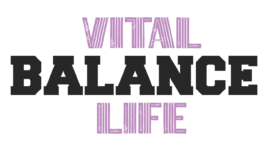When someone mentions pain relief, what comes to mind? Over-the-counter pills? Prescription medications? While these are common solutions, there’s a growing demand for holistic pain relief options that are effective and closer to home. “Pain management near me” is not just about locating a pharmacy or a doctor’s clinic; it’s about identifying natural, accessible ways to alleviate pain and improve well-being.
The Drawbacks of Conventional Pain Relief
Before diving into holistic options, it’s crucial to understand why more individuals are looking for natural remedies.
- Side Effects: Many conventional pain medications, especially when consumed over long periods, come with an array of side effects ranging from mild nausea to severe digestive problems.
- Addiction Potential: The opioid crisis is a testament to the dangers of becoming reliant on certain prescription medications for pain relief.
- Cost: Chronic pain often means chronic medication consumption, leading to a consistent financial drain.
Natural Approaches to Pain Management
In light of the challenges associated with conventional treatments, many are turning to holistic pain relief alternatives. Here are some natural options that might be right under your nose.
Physical Therapies
- Acupuncture: An ancient Chinese therapy that involves inserting fine needles into specific body points. This practice is believed to rebalance the body’s energy and stimulate healing. Acupuncture has been recognized for its potential in managing various pain types, from migraines to lower back pain.
- Chiropractic Care: Focusing on the musculoskeletal system, especially the spine, chiropractic adjustments can relieve pain by ensuring proper alignment and promoting the body’s self-healing mechanisms.
Herbal and Natural Remedies
- Turmeric: This vibrant yellow spice contains curcumin, an active compound with potent anti-inflammatory properties. It’s beneficial for joint pain and arthritis.
- CBD Oil: Derived from the hemp plant, CBD oil has garnered attention for its pain-relieving properties, especially for neuropathic pain and inflammation.
- White Willow Bark: Often referred to as “Nature’s Aspirin,” it has been used for centuries to treat pain and inflammation.
Mind-Body Techniques
- Meditation and Mindfulness: These practices can significantly reduce pain by altering the way our brain perceives it. Regular meditation can lower stress hormones, which are known to exacerbate pain.
- Yoga: A combination of physical postures, breathing exercises, and meditation, yoga can improve flexibility, reduce muscle tension, and enhance mental well-being—all contributing to pain reduction.
Lifestyle Changes
- Dietary Adjustments: Consuming a balanced diet with anti-inflammatory foods like fatty fish, berries, and green tea can significantly reduce pain symptoms.
- Physical Activity: Regular movement and exercise can prevent muscle atrophy and stiffness. It also releases endorphins—natural painkillers.
- Adequate Sleep: Ensuring a good night’s sleep is crucial for the body’s repair mechanisms. Lack of rest can amplify pain sensations.
Why Seek Holistic Pain Management Near Me?
- Convenience: Holistic remedies often involve ingredients or practices that can be sourced or performed locally. There’s no need to look far.
- Sustainability: Many natural therapies are sustainable and eco-friendly, making them an excellent choice for those concerned about their environmental footprint.
- Personalization: Holistic approaches are often tailored to individual needs, ensuring that the therapy is as effective as possible for each person.
- Fewer Side Effects: Natural treatments tend to come with fewer side effects than their pharmaceutical counterparts.
Key Takeaways
Pain is a complex sensation that varies widely from one individual to another. What works for one person might not work for another. It’s essential to:
- Consult with Professionals: Before diving into a natural pain relief regimen, always consult with a healthcare professional. They can guide you, especially if you’re already on medication.
- Listen to Your Body: Our bodies often communicate with us, indicating what’s working and what’s not. Pay attention to how your body responds to different therapies.
- Stay Open-minded: While some holistic remedies might sound unconventional, they’ve been time-tested and have provided relief for many.
In the quest for “pain management near me,” don’t just look for clinics or pharmacies. The solutions might be in your kitchen, at a nearby park, or even in your mindset. Natural pathways to pain relief are abundant, sustainable, and can offer a comprehensive approach to well-being. So, as you seek relief, remember to explore these holistic options close to home.



